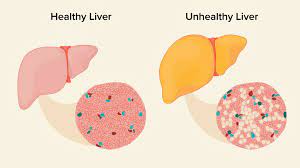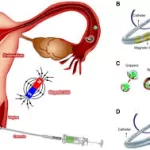In a groundbreaking development, researchers have unveiled a novel screening tool that could dramatically enhance the survival prospects of patients battling hepatocellular carcinoma (HCC), the most prevalent form of liver cancer. Published in The American Journal of Pathology, the study details a serum fusion-gene machine-learning model designed to bolster early detection efforts and improve treatment monitoring.
HCC, responsible for approximately 90% of liver cancer cases worldwide, often eludes early diagnosis, resulting in a dismal 20% survival rate past five years. Current screening methods, such as the serum alpha-fetoprotein biomarker, frequently fall short in accuracy, leading to delayed detection until the disease has reached advanced stages.
Lead investigator Jian-Hua Luo, MD, PhD, from the University of Pittsburgh School of Medicine, emphasized the critical need for early detection: “Liver cancer typically progresses silently, with symptoms emerging only in advanced stages. Our goal was to develop a reliable, cost-effective tool capable of identifying early-stage HCC in at-risk populations.”
The study focused on analyzing serum samples from 61 HCC patients and 75 individuals with non-HCC conditions using advanced quantitative reverse transcription PCR (RT-PCR) to detect nine fusion transcripts. Results showed that seven of these fusion genes were notably prevalent in HCC patients. By leveraging machine-learning algorithms, the researchers devised predictive models that achieved an impressive 95% accuracy when combining fusion-gene data with serum alpha-fetoprotein levels.
Dr. Luo highlighted the model’s multifaceted benefits: “Our fusion-gene machine-learning model not only enhances HCC detection rates over traditional methods but also facilitates precise monitoring of treatment effectiveness and cancer recurrence.” This dual capability promises to revolutionize clinical approaches to liver cancer management, potentially elevating five-year survival rates from a mere 20% to a remarkable 90%.
The implications extend beyond diagnostics, offering a cost-effective alternative to frequent imaging analyses. Dr. Luo underscored, “Regular use of our model could spare patients unnecessary procedures while swiftly identifying those at high risk for HCC. This targeted approach not only saves lives but also conserves healthcare resources.”
As the medical community awaits further validation and implementation of this promising technology, anticipation grows for its potential to redefine standards of care for liver cancer globally. The fusion-gene machine-learning model stands poised as a beacon of hope in the fight against one of the deadliest cancers, promising earlier interventions and improved outcomes for patients worldwide.











